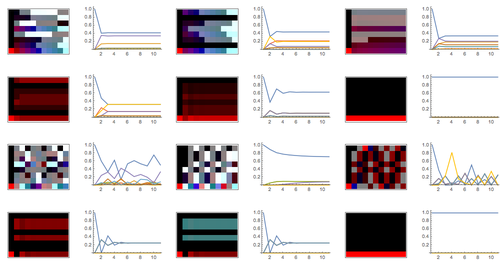Alumni

Bio
Ruhi is a second year undergraduate student at the University of Waterloo studying mathematical physics. She hopes to continue her education in order to learn as much as she can about the universe. Her interests include particle physics, quantum computing, and thermoelectric generators. In her spare time, she enjoys reading novels, sewing, and watching documentaries.
Computational Essay: You Drank, but can you Drive?
Project: Implementing and Exploring Quantum Cellular Automata

Goal
Implement a quantum cellular automaton function in the Wolfram Language using a block quantum cellular automata model. Find possible transformations on quantum states and visualize each step. Further explore the function to find interesting phenomenon. Potentially figure out if after certain large amounts, the system reduces to regular cellular automata.
Summary of Results
First, a model based on quantum teleportation is formed. The results of this are shown to have non-random behavior. Then, a model based on evolving an entire tensor product state is formed. This model shows increasingly ordered behavior when evolved over time. Specifically, the probability of being in a given state becomes constant after a certain amount of time. This could potentially have implications regarding the relationship between computational complexity and time taken to reach an equilibrium state. Finally, the visualization is used to simulate certain physical systems. Other failed models are also explained.
Future Work
For the future, I would like to determine if there is a definite relationship between the time taken to evolve into an equilibrium state and the computational complexity of the evolution of the state into the equilibrium state. It would also be useful to explore more rules and gather data to explore the relationship further. There were also a couple of failed models that should be revisited, and attempts could be made to implement them. It is also possible to explore further physics applications including simulating NMR and more complicated Heisenberg spin chains.